This site is part of various affiliate programs. Links may give us a small compensation for any purchases you make, at no additional cost to you. Please read the disclaimer policy for full details.
If you don’t have time to read the article, then the best Nikon film camera is the Nikon FM2.
Nikon have been producing film cameras since 1949, and although they are now concentrating on digital bodies, there remain decades-worth of brilliantly designed and very special Nikon film cameras, and nearly all at very low prices.
I’ve been taking pictures for over 30 years, starting out with a Kodak Instamatic before graduating to the big leagues of film and digital photography, and have amassed a wealth of knowledge in what makes the best film camera, and the key quirks you should look out for in Nikon film cameras in particular.
Because there are so many Nikon film cameras, it’s hard to know where to start if you are just picking up a new hobby of film photography, or if you are looking for another model for your collection.
This article contains all of my knowledge on film cameras, answering questions like:
- Should you go for an electronic or mechanical camera?
- Is fully automatic or manual operation better in a used camera?
- How does the age of the camera affect the lenses you can use?
And provides you with a few suggestions for some of the best Nikon 35mm film camera that you can buy today, without having to break the bank.
The Best Nikon Film Camera
Classic Fully Manual Nikon
- Fully manual operation
- Can work without batteries (apart from light meter)
- Sturdy and robust – can withstand knocks and bumps
- Classic design that looks great
- Perfect camera to learn film photography
Compare the Top Nikon 35mm Film Cameras
Camera | Pros | Cons | Check Price | |
[Best Nikon Film Camera] | Classic design; Fully manual; Can work without batteries | Fully manual (!) | ||
Excellent value for money; Some auto features; Classic design | Potentially unreliable light meter | |||
Works well with a wide range of lenses | Manual focus can be tricky | |||
Compatible with modern AF lenses; Easy to use | Viewfinder feels small | |||
Professional build quality & operation | No auto mode | |||
Affordable; Modern functionality | Lacks character |
What to Look Out for in Old Nikon Film Cameras?
There’s such a variety of old Nikon film camera models, with decades of development on show, but perhaps the most important consideration when looking for your ideal film camera is the mechanical and electronic lens technology used.
All Nikon cameras since 1959 have essentially used the same F mount, but there have been modifications to this over the years which impacts on metering, autofocus and usability of the lenses depending on the compatibility of the lens and camera in question.
It’s important for you to have a basic understanding of the lineage of these lens designs, so that you can be sure that the camera you are looking at, can use your desired lens.
Pre-1977 Lenses
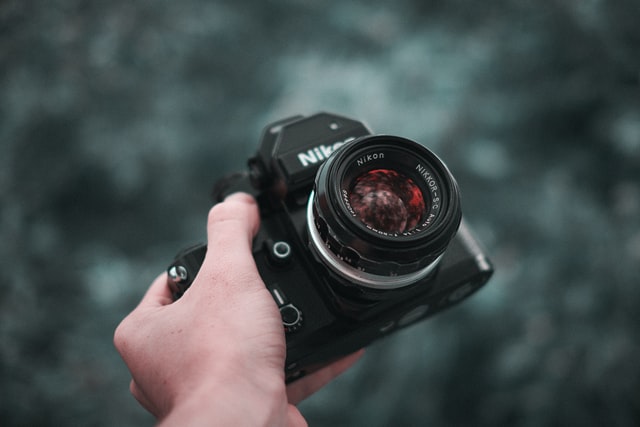
From 1959 to 1977, Nikon lenses followed the basic F mount standard, where you had to manually index the lens (calibrate it to the camera’s light meter) by twisting the aperture ring from its largest position and back. These lenses are the origin of the famous Nikon “rabbit ears”, which are prongs on the lens aperture ring that connect to the camera.
If you use a camera manufactured before 1977 (which has the noticeable prong to fit in the “rabbit ears”), but want to use a lens made after this date, then you will need a shop to convert the lens if you want full metering. If you are ok with only full aperture metering (or no metering for series E autofocus lenses) then any Nikkor lenses (excluding the G series) can be used on pre-1977 bodies.
You should not attempt to mount a pre-1977 lens on a post-1977 body however, as this could cause damage to both the lens and body. John White has a good page on Nikon lens compatability across the years.
AI Lenses (Post-1977)
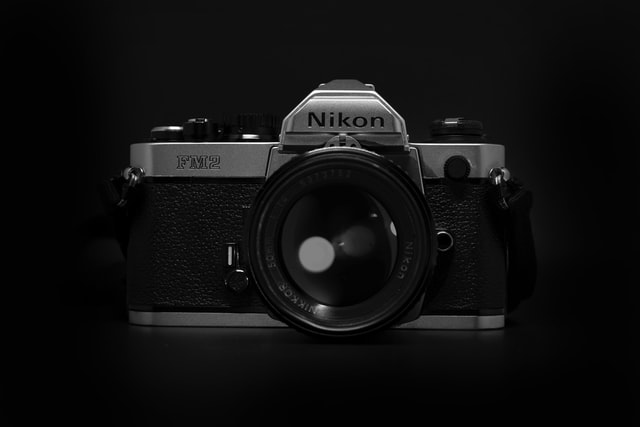
After 1977, Nikon introduced AI (automatic indexing) lenses, which removed the need for you to manually index the lens on mounting, by twisting the aperture ring fully open and closed.
These also offer ADR (aperture direct readout), where you can see the currently selected aperture directly in the viewfinder, and the AI feature means that you get automatic light meter calibration.
These lenses still have the “rabbit ears”, but this is for backwards compatibility with older cameras, and is not used on post-1977 camera bodies.
Any post-1977 lens should more-or-less work on a post-1977 body, although there may be some loss of functionality with regards to metering. The exception to this is the modern G series of lenses, which lack an aperture ring, and so cannot be used on older film cameras which otherwise have no way to control the lens aperture.
I have included information on lens compatibility with each camera. There’s plenty of post-1977, AI lenses available on the used market, but far fewer pre-1977 lenses, although these are often offered at bargain prices. If you do want to use pre-1977 lenses, then make sure that you look at a compatible camera.
Manual vs Automatic Cameras
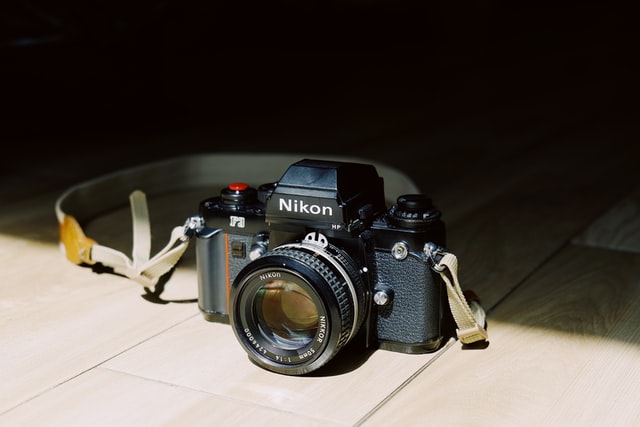
Another area that you need to think about when looking for your Nikon film camera is the degree to which it offers automatic shooting.
The more modern cameras made after 2000 often contain a variety of auto shooting modes like aperture priority, shutter priority and program, which controls every aspect of the exposure for you.
Older cameras like the Nikon FM2 are full manual, with only an electronic light meter. These require more basic photo knowledge to use, but can operate without batteries and are potentially easier to fix when they break, as they use purely mechanical parts.
Reviews of the Best Nikon Film Cameras
You can take a look at some of the best Nikon film cameras below along with their pros and cons to get a better idea about their functioning.
1. Nikon FM2 [Best Nikon SLR Film Camera]
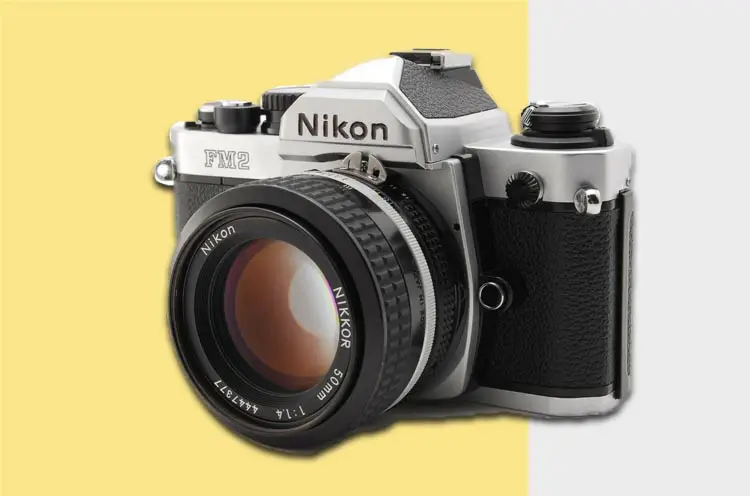
The Nikon FM2 is my pick for best Nikon film camera, and is a very popular camera that can work well for professional film photography, allowing you to achieve fantastic pictures in all conditions. It has a surprisingly wide range of shutter speeds, which was quite rare for when it was initially released.
This camera has a metal body and construction, making it a sturdy and durable camera that can withstand tough conditions. The FM2 uses a fixed metering tab, meaning that it is compatible with post-1977 lenses (ie. AI lenses), but cannot be used with pre-1977 lenses without modifications made to the lens.
It’s a fully manual camera, which means both aperture and shutter must be entered by you, but one of the major advantages of the FM2 is the it is also possible to use this camera without batteries, although you would then have to guess at the appropriate exposure.
Nikon FM2 Features
- Film Type: 35 mm
- Shutter Speed: 1s to 1/4000 of a second
- Frames per Second: 3.2
- ISO Range (Manual): 12-6400
- Lens Compatibility: Post-1977 (pre-1977 with lens modification)
- Extras: Fully mechanical shutter
Pros:
- This camera is fully manually and can operate even without a battery, making it flexible to use
- Small and lightweight
- Sturdy and robust, withstanding tough conditions while also offering durability and stability
- The exposure meter offers accurate and consistent results
- It has good weather protection measures in place making it suitable for regular outdoor use
- Classic design and very popular among enthusiasts
Cons:
- No auto mode can make it harder to use for beginners
- There is some shutter lag
->> Check Latest Price
2. Nikon FE2
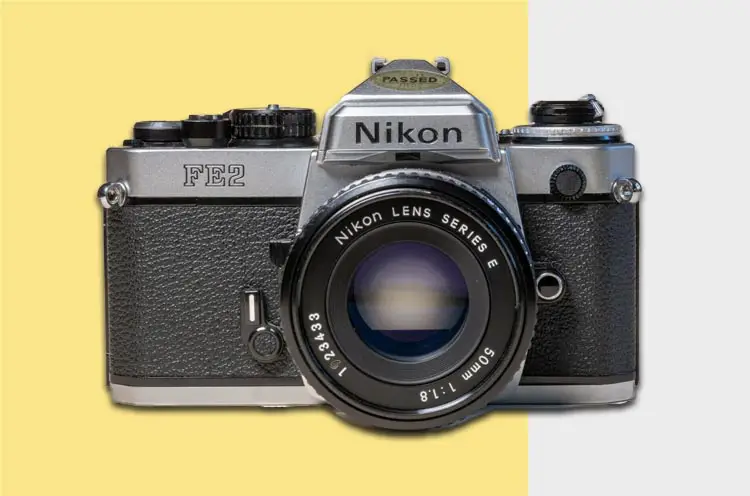
The Nikon FE2 uses a fixed metering tab, meaning that it is compatible with post-1977 lenses, but cannot be used with pre-1977 lenses without modifications made to the lens. has several adaptable and changeable lenses that you can make use of in a variety of situations.
It contains many of the advantages of the original FE model, including the aperture-priority shooting mode, but has an upgrade titanium shutter.
It includes both manual and auto exposure and operates by relying on a battery. The focus system is manual in nature, giving you a good amount of control – you can’t use autofocus lenses with this.
Compared with the FM2, these cameras might look the same on the surface, but the FE2 offers far more automatic controls than the fully manual FM2. It’s also available significantly cheaper as it is less of a collector’s item, but for my money makes a better camera for those starting out in film photography, or who just want something cheaper to play around with.
Nikon FE2 Features
- Film Type: 35 mm
- Shutter Speed: 8s to 1/4000 of a second
- Frames per Second: 3.5
- ISO Range (Manual): 12-4000
- Lens Compatibility: Post-1977 (pre-1977 with lens modification)
- Extras: Focal plane shutter, interchangeable lenses, motor drive, manual and auto exposure
Pros:
- Very good value for money
- This camera comes with great battery life, allowing you to make use of the film for a good few hours without running out in the middle
- With both electronic and mechanical functioning, it can be possible for you to rely on the manual mode as backup
- This is a compact and lightweight camera, allowing you to carry it around as required
- Has an aperture priority mode for semi-auto shooting
Cons:
- Can be difficult to repair given its reliance on electronics
- Light meter can be unreliable
->> Check Latest Price
3. Nikon F3
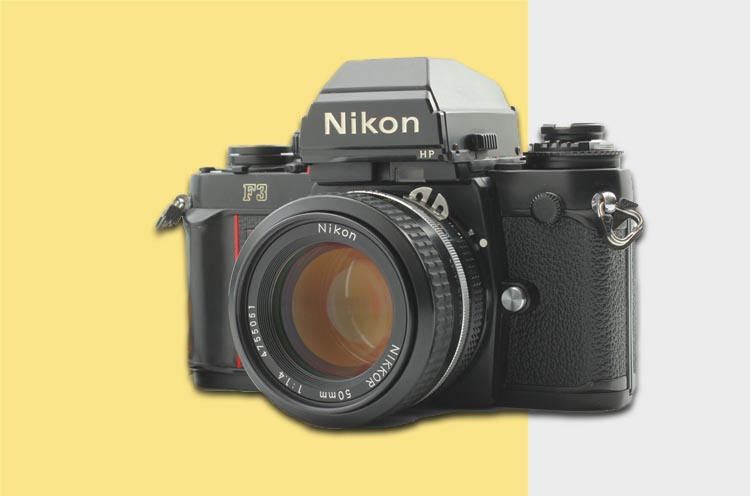
The Nikon F3 came about in 1980, not long after the transition to AI lenses, but even a camera this old is still quite durable, functional and accurate in its shots. The F3 uses a movable metering tab, meaning that it can be used with both more recent and earlier Nikon lenses, although you only have stop-down metering with the latter.
This camera is also quite lightweight and portable, allowing you to carry it around on trips and events, one of the reasons that it became popular for semi-professional photography. The viewfinder is can also be detached and replaced as required.
Quite noteworthy is this camera’s large number of frames per second. It can capture as many as 13 frames per second, and in combination with its fairly wide range of shutter speeds, this can often lead to great results.
Nikon F3 Features
- Film Type: 35 mm
- Shutter Speed: 16s to 1/1000 of a second
- Frames per Second: 13
- ISO Range (Manual): 12-6400
- Lens Compatibility: All (pre-1977 with stop-down metering)
- Extras: Wide viewfinder range
Pros:
- Works well with both manual focus and autofocus lenses
- Manual ISO settings are reliable
- The metering system relies on a center-weight system in which the exposure is made to point to the center
- Viewfinder is bright and clear
Cons:
- Manual focus can be a bit of a pain
->> Check Latest Price
4. Nikon F-501
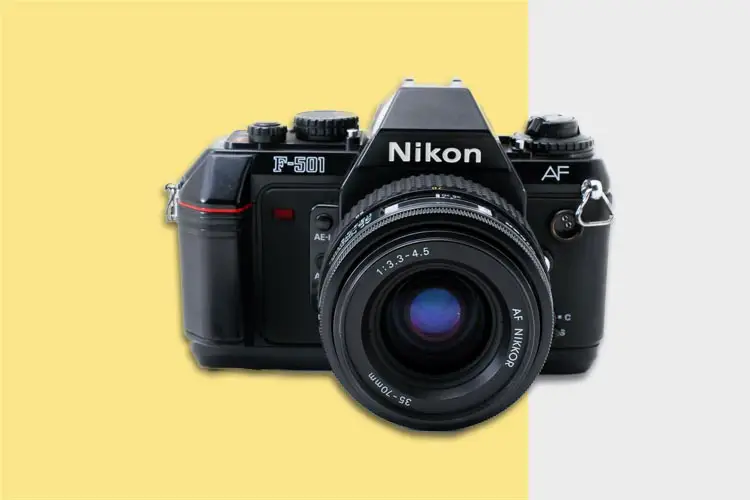
The Nikon F-501, known as the N2020 in the United States, is an autofocus camera and the first of its kind for Nikon when it was released in the year 1986. The film loading system in this camera is also automatic in nature.
The integrated motor, easy to read screens and an auto exposure system make the N2020 simple to use, even for beginners. The through-the-lens autofocus is very accurate, particularly for a camera of its age.
The focus modes also have dual settings that include single and continuous focus. There are auto-exposure lock buttons, and all-in-all, you get a very well designed camera in the N2020.
Nikon F-501 Features
- Film Type: 35 mm
- Shutter Speed: 1s to 1/2000 of a second
- Frames per Second: 2.5
- ISO Range (Manual): 25-2000, 12-3200
- Lens Compatibility: Post-1977 (pre-1977 with lens modification)
- Extras: Autofocus compatible
Pros:
- Compatible with modern autofocus lenses
- Ergonomically designed
- Straightforward to use and an excellent camera to learn film photography
- Durable and reliable
- Available for a budget price
Cons:
- Viewfinder can feel small
- Slightly bulky
->> Check Latest Price
5. Nikon F2
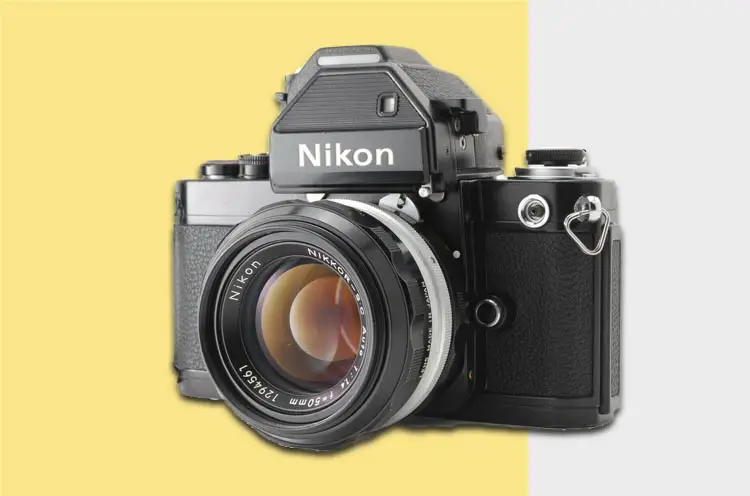
The Nikon F2 can be a great option for professionals since it comes with a wide ISO and shutter speed range, offering control and versatility. The manual mode is also easy to understand and access, although you can also use the aperture-priority and shutter-priority modes.
The F2 uses the older prong design which fits into the “rabbit ears” on the lens to calibrate the light meter. This means that it is compatible with all Nikkor lenses, although will lose metering on the more recent series E lenses without lens conversion. Of course it remains manual focus only.
The swing-open back was an addition to this camera for convenient access to the film, and the design of the ISO and shutter speed control wheels is particular unique on this model. It is also possible to use this camera without a battery in its manual operation.
Nikon F2 Features
- Film Type: 35 mm
- Shutter Speed: 1s to 1/2000 of a second
- Frames per Second: 5
- ISO Range (Manual): 6-6400
- Lens Compatibility: All
- Extras: Horizontal focal plane shutter; swing-open back
Pros:
- It includes titanium shutter curtains that ensure durability
- You can easily operate this camera even without any batteries as long as you use it in its manual mode
- Relatively easy to use
- Metal construction makes the camera able to withstand knocks and bumps
- High frame rate shutter
Cons:
- No auto mode
- Potential reliability issues
->> Check Latest Price
6. Nikon F75
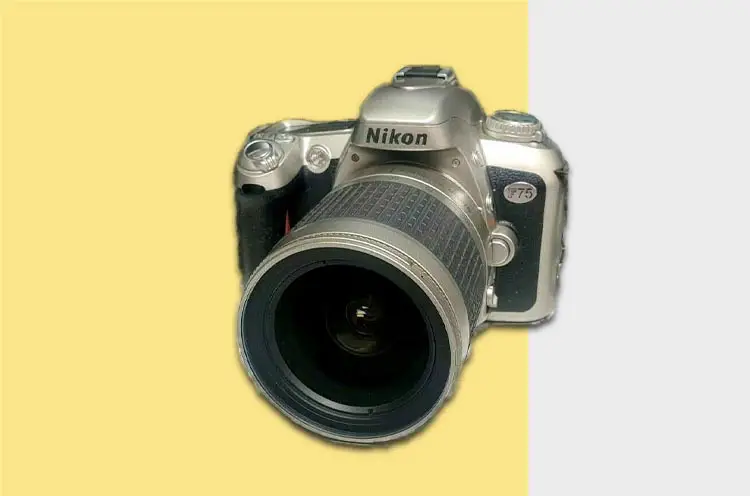
The Nikon F75 came out in 2003. It is referred to as the N75 in the US and the U2 in Japan. This camera has changeable viewfinder screens including one for depth-of-field, making it easier to make specific focusing adjustments.
Since this camera has a largely plastic construction, it was and has been sold at a more affordable cost, without compromising on the quality and sturdiness. This camera is also much closer to more modern digital cameras in its functionality, having a wide range in terms of its shutter speed, and compatibility with autofocus lenses.
There are all kinds of exposure modes, allowing for aperture priority and shutter priority and plenty of extra info such as a battery level display in the viewfinder. The metering system also has 25 sections, more than the usual 14.
The F75 is one of the more modern cameras on this list, and uses electronic coupling for metering. Pre-1977 lenses cannot be used without lens modification.
Nikon F75 Features
- Film Type: 35 mm
- Shutter Speed: 30s to 1/2000 of a second
- Frames per Second: 1.5
- ISO Range (Manual): 25-5000
- Lens Compatibility: Post-1977 (pre-1977 with lens modification)
- Extras: Can us a depth-of-field preview screen, pop-up flash, plenty of exposure modes
Pros:
- Affordable without losing out on the quality of its features
- Modern functionality in shutter speed and shooting modes
- ISO range can be adjusted separately for manual and automatic modes
- Easy to read screens
- Pairs well with Vibration Reduction (VR) lenses
Cons:
- Lacks ouright durability when compared to all-metal cameras
- Lacks character
->> Check Latest Price
Final Thoughts on the Best Nikon Film Cameras
There are far more Nikon film cameras available than the few we have looked at here, such as the Nikon EM film camera, and many more. This article is just to give you a taste of the kinds of 35mm film cameras produced by Nikon over the years, and some good choices for those that are available for a reasonable price.
Any one of them would make a good first step into film photography, particularly if you are looking for a fully manual camera, although your options are more limited if you require extra shooting modes like aperture-priority.
If you want a true classic model, then you can’t beat the Nikon FM2, but if you are looking for something a little more suited to beginners, then I would prefer the Nikon FE2.
Read More:
What are the parts of a film camera?
What’s the best 35mm film for beginners?
Nikon 50mm f/1.4 vs f/1.8 lens comparison
How to find the best film cameras for beginners
What’s the best Canon film camera?
What’s the best point and shoot film camera?
What’s the best camera under $300?






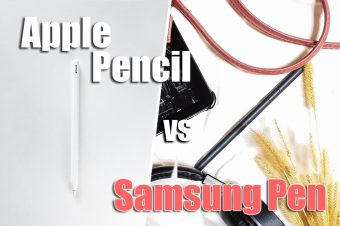
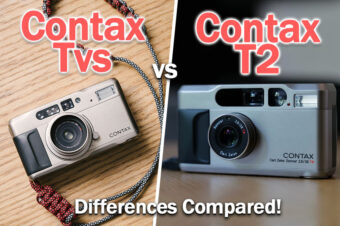
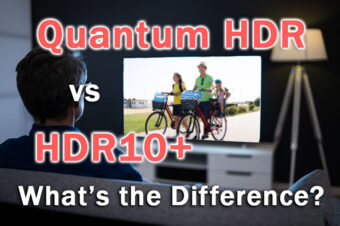
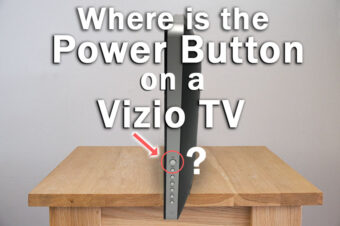


Leave a Reply